| View previous topic :: View next topic |
| Author |
Message |
mo


Joined: 27 Aug 2009
Posts: 8979
Location: Australia
Expire: 2016-07-30
|
 Posted: Wed Nov 04, 2009 1:10 am Post subject: Rikenon 1.7/50 on Ricoh KR5 ....400ASA Kodak gold Posted: Wed Nov 04, 2009 1:10 am Post subject: Rikenon 1.7/50 on Ricoh KR5 ....400ASA Kodak gold |
 |
|
mo wrote:
Hi all,Here are some more film photos scanned at a shop then put onto my computer via disc.I like this lens.I am putting up a few different photos in the hope you can help me where I am going wrong with the exposure/speed as some show the grain and some are better in clarity etc.I am trying to narrow down what I am doing right and what I am doing wrong so I can adjust accordingly.
F16/500 evening sun from the right of picture
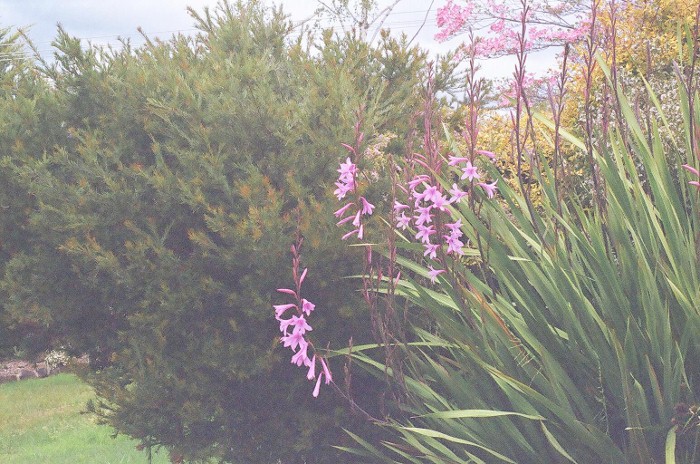
F16/250
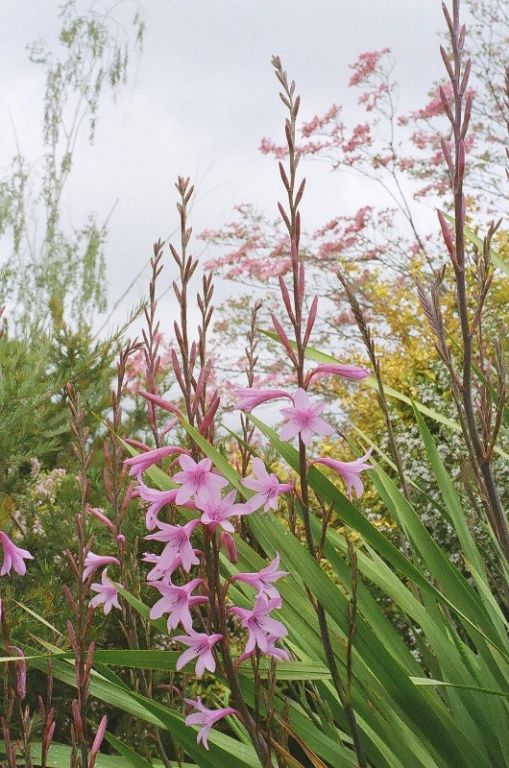
F1.7/500
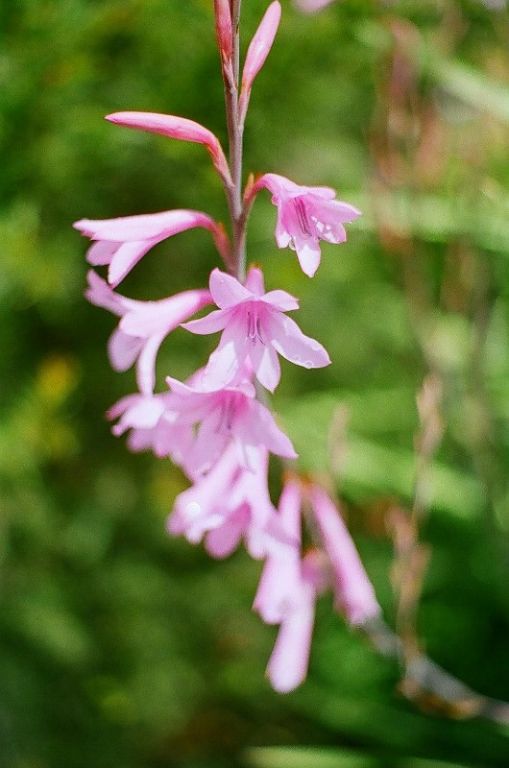
F16/500
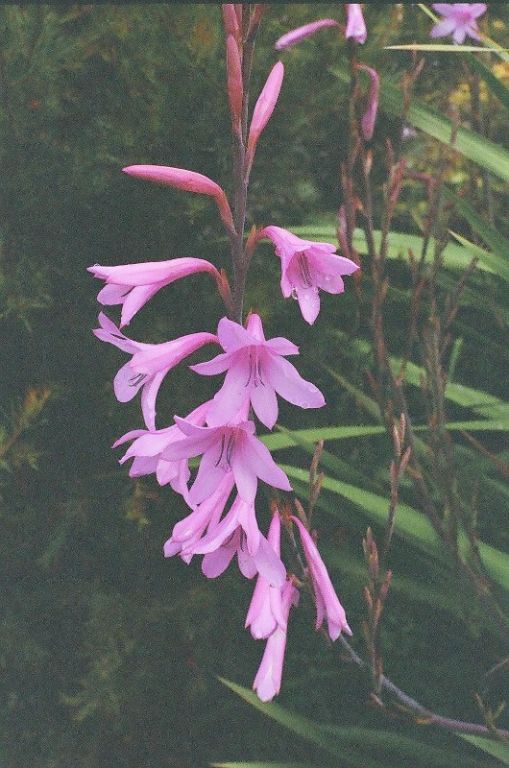
F1.7/500 looking towards sun,it is lower in the sky going behind a hill.
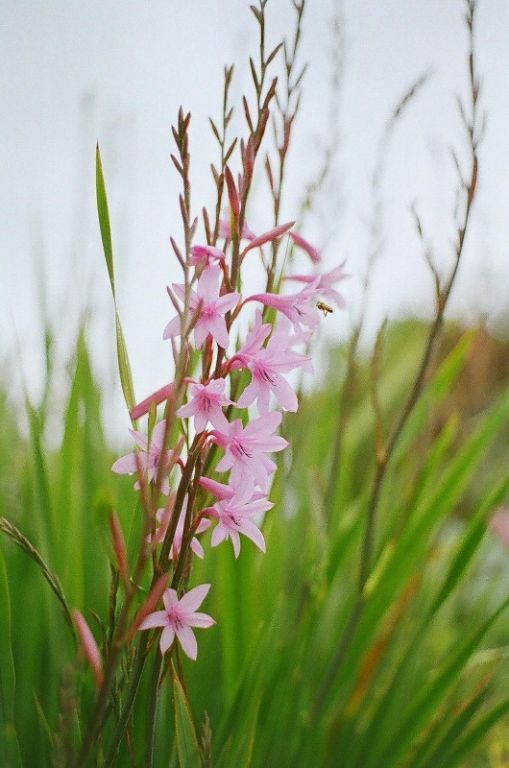
F16/60 again towards the sun as it goes down,I am on a slope.
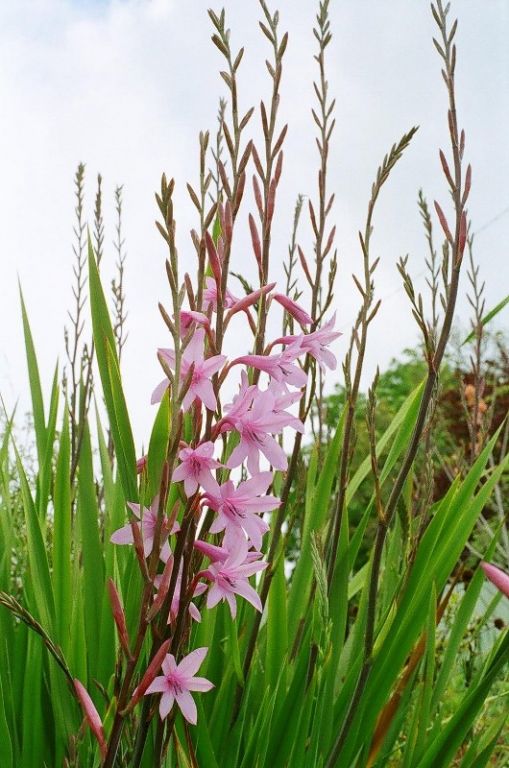
Thanks for any tips and insight!This is my thought on what may be wrong I am to high on the shutter speed settings when I use the higher F stop.I am happy with #3 as I was trying for the bokeh
_________________
Moira, Moderator 
Fuji XE-1,Pentax K-01,Panasonic G1,Panasonic G5,Pentax MX
Ricoh Singlex TLS,KR-5,KR-5Super,XR-10
Lenses
Auto Rikenon's 55/1.4, 1.8, 2.8... 50/1.7 Takumar 2/58 Preset Takumar 2.8/105 Auto Takumar 2.2/55, 3.5/35 Super Takumar 1.8/55...Macro Takumar F4/50... CZJ Biotar ALU M42 2/58 CZJ Tessar ALU M42 2.8/50
CZJ DDR Flektogon Zebra M42 2.8/35 CZJ Pancolar M42 2/50 CZJ Pancolar Exakta 2/50
Auto Mamiya/Sekor 1.8/55 ...Auto Mamiya/Sekor 2/50 Auto Mamiya/Sekor 2.8/50 Auto Mamiya/Sekor 200/3.5 Tamron SP500/8 Tamron SP350/5.6 Tamron SP90/2.5
Primoplan 1.9/58 Primagon 4.5/35 Telemegor 5.5/150 Angenieux 3.5/28 Angenieux 3,5/135 Y 2
Canon FL 58/1.2,Canon FL85/1.8,Canon FL 100/3.5,Canon SSC 2.8/100 ,Konica AR 100/2.8, Nikkor P 105/2.5
|
|
| Back to top |
|
 |
marty

Joined: 09 Apr 2009
Posts: 767
Location: Italy
|
 Posted: Wed Nov 04, 2009 8:56 am Post subject: Posted: Wed Nov 04, 2009 8:56 am Post subject: |
 |
|
marty wrote:
Hi, Mo-Fo. #1 is probably underexposed, the print has been made brighter to sort of compensate for that (It would have been way darker). You can tell that by the hazy look, washed out colors, graininess and lack of detail in the shadows. You see, the foreground is in shadow while the background is brighter and that tricked the meter. Solution: overexpose by 1/2 or a full stop from the meter reading or use a flash to expose the foreground. #4 same problem. The remainder looks more or less ok. The experience will lead you to recognize immediately this situation and take your counter measures just before pressing the shutter. Remember that the meter is trying to average the exposure across the frame ( to put it in simple terms) and when there are great variations in luminance between different areas of the frame one of these areas will prevail leading the other on the opposite side (if one is too bright the other is going to be too dark, or the opposite).
When unsure (when you feel the illumination of the scene in very uneven) a good practice is bracketing the exposure that is taking a shot at meter reading, one a stop under, one a stop over (going in half stops is even better). You will then choose the frame which looks better (and you'll know what's ok for the next time you'll be facing a similar scene).
Hope this helps.
Cheers, Marty.
_________________
Canon FD
Bodies: AT-1, A-1, T-90
Lenses: nFD 20mm f2.8, 24 f2.8, 28 f2.8, 35 f2, FD 50 f1.8 S.C., 85 f1.8, 100 f2.8, 135 f2.8, 200 f4, 300 f4
|
|
| Back to top |
|
 |
mo


Joined: 27 Aug 2009
Posts: 8979
Location: Australia
Expire: 2016-07-30
|
 Posted: Wed Nov 04, 2009 9:42 am Post subject: Posted: Wed Nov 04, 2009 9:42 am Post subject: |
 |
|
mo wrote:
Thank you so much,it helps a great deal.I only have a film camera so not sure if you can use the "bracketing" technique.
You are so right about the dark and light areas...I have a few other exposures that are doing the same.Standing in shadow shooting into lightened areas.
_________________
Moira, Moderator 
Fuji XE-1,Pentax K-01,Panasonic G1,Panasonic G5,Pentax MX
Ricoh Singlex TLS,KR-5,KR-5Super,XR-10
Lenses
Auto Rikenon's 55/1.4, 1.8, 2.8... 50/1.7 Takumar 2/58 Preset Takumar 2.8/105 Auto Takumar 2.2/55, 3.5/35 Super Takumar 1.8/55...Macro Takumar F4/50... CZJ Biotar ALU M42 2/58 CZJ Tessar ALU M42 2.8/50
CZJ DDR Flektogon Zebra M42 2.8/35 CZJ Pancolar M42 2/50 CZJ Pancolar Exakta 2/50
Auto Mamiya/Sekor 1.8/55 ...Auto Mamiya/Sekor 2/50 Auto Mamiya/Sekor 2.8/50 Auto Mamiya/Sekor 200/3.5 Tamron SP500/8 Tamron SP350/5.6 Tamron SP90/2.5
Primoplan 1.9/58 Primagon 4.5/35 Telemegor 5.5/150 Angenieux 3.5/28 Angenieux 3,5/135 Y 2
Canon FL 58/1.2,Canon FL85/1.8,Canon FL 100/3.5,Canon SSC 2.8/100 ,Konica AR 100/2.8, Nikkor P 105/2.5
|
|
| Back to top |
|
 |
F16SUNSHINE


Joined: 20 Aug 2007
Posts: 5486
Location: Left Coast
Expire: 2011-11-18
|
 Posted: Wed Nov 04, 2009 5:48 pm Post subject: Posted: Wed Nov 04, 2009 5:48 pm Post subject: |
 |
|
F16SUNSHINE wrote:
Hi MoFo
Marty has it and gives great advice.
I would only add just a couple little methods to help train your eye a bit for metering.
Teach yourself to recognize the differences in brightness of a particular scene.
One way to do this is to make your eye a sort of spot meter.
For example try this sequence.
Compose a scene using the VF so that you have a good idea of the frame you will expose.
Now take the camera away from your eye. Close your hand into a child's "telescope" and look through it at different parts of the scene.
Your making your eye into a sort of spot meter. As you move around you take not of the differences in brightness of a scene.
Now take the camera with meter on to the brightest area and compare to the darkest. Also measure the are which is most important to be exposed correctly.
Take note of the differences in exposure value the meter is telling you.
You now have a good idea of what areas may be over or under exposed in order to expose correctly your main subject.
Experiment with this method until you have your eye trained to look for where to meter for "average" automatically.
In your first frame using ISO 400 film. My guess would be that f5.6-f8 and 1/500sec would have exposed the foliage cleanly but would blow out the sky.
You will have to decide where your compromises will be in any given frame.
Have fun 
_________________
Moderator |
|
| Back to top |
|
 |
mo


Joined: 27 Aug 2009
Posts: 8979
Location: Australia
Expire: 2016-07-30
|
 Posted: Wed Nov 04, 2009 8:30 pm Post subject: Posted: Wed Nov 04, 2009 8:30 pm Post subject: |
 |
|
mo wrote:
Thank you,great tip and homework 
_________________
Moira, Moderator 
Fuji XE-1,Pentax K-01,Panasonic G1,Panasonic G5,Pentax MX
Ricoh Singlex TLS,KR-5,KR-5Super,XR-10
Lenses
Auto Rikenon's 55/1.4, 1.8, 2.8... 50/1.7 Takumar 2/58 Preset Takumar 2.8/105 Auto Takumar 2.2/55, 3.5/35 Super Takumar 1.8/55...Macro Takumar F4/50... CZJ Biotar ALU M42 2/58 CZJ Tessar ALU M42 2.8/50
CZJ DDR Flektogon Zebra M42 2.8/35 CZJ Pancolar M42 2/50 CZJ Pancolar Exakta 2/50
Auto Mamiya/Sekor 1.8/55 ...Auto Mamiya/Sekor 2/50 Auto Mamiya/Sekor 2.8/50 Auto Mamiya/Sekor 200/3.5 Tamron SP500/8 Tamron SP350/5.6 Tamron SP90/2.5
Primoplan 1.9/58 Primagon 4.5/35 Telemegor 5.5/150 Angenieux 3.5/28 Angenieux 3,5/135 Y 2
Canon FL 58/1.2,Canon FL85/1.8,Canon FL 100/3.5,Canon SSC 2.8/100 ,Konica AR 100/2.8, Nikkor P 105/2.5
|
|
| Back to top |
|
 |
estudleon


Joined: 15 May 2008
Posts: 3754
Location: Argentina
|
 Posted: Thu Nov 05, 2009 6:19 pm Post subject: Posted: Thu Nov 05, 2009 6:19 pm Post subject: |
 |
|
estudleon wrote:
| F16SUNSHINE wrote: |
Close your hand into a child's "telescope" and look through it at different parts of the scene.
Your making your eye into a sort of spot meter. As you move around you take not of the differences in brightness of a scene.
|
Great!!
As you sure know, Ansel Adams taught in this way to recognice the differents zones of the scene.
Very usefull.
_________________
Konica 2,8/100
CZJ: 4/20, 2,4/35, 1,8/50 aus jena, 3,5/135MC, Pentacon 1,8/50
Pentax S-M-C-1,4/50
Helios 44-3
Mamiya 2,8/135
Misc. : jupiter 9
Stuff used:
A) SRL
Alpa 10 D - kern macro Switar 1,9/50 -black, Kilffit apochromat 2/100.
Asahi pentax spotmatic super takumar 1,4/50
Contaflex super B tessar 2,8/50 Pro-tessar 115
Leica R3 electronic summicron 2/50 elmarit 2,8/35
Konica Autoreflex 3 (2 black and chrome one), TC, T4. 2,8/24, 3,5/28 not MC and MC, 1,8/40, 1,4/50, 1,7/50 MC and not MC, 1,8/85, 3,2/135, 3,5/135, 4/200
Minolta XG9 2,8/35, 2/45, 3,5/135
Nikkormat FTn 1,4/50, 2,8/135
Fujica ST 801, 605, 705n. 3,5/19, 1,4/50, 1,8/55, 4/85, 3,5/135.
Praktica MTL 5 and a lot of M42 lenses.
Voigtlander. Bessamatic m, bessamatix de luxe, bessamatic cs, ultramatic and ultramatic cs.
Skoparex 3,5/35, skopagon 2/40, skopar 2,8/50, skopar X 2,8/50, super lanthar (out of catalogue) 2,8/50, dinarex 3,4/90, dinarex 4,8/100, super dinarex 4/135, super dinarex 4/200, zoomar 2,8/36-83, portrait lens 0, 1 and 2. Curtagon 4/28 and 2,8/35
Canon AV1, 1,8/50
Rolleiflex SL35 and SL35 E. 2,8/35 angulon, 2,8/35 distagon, 1,4/55 rolleinar, 1,8/50 planar, 4/135 tessar, 2,8/135 rolleinar, x2 rollei, M42 to rollei adap.
Etc.
RF
Yashica Minister III
Voightlander Vito, vitomatic I, Vito C, etc.
Leica M. M2, M3 (d.s.) and M4. Schenider 3,4/21, 2/35 summaron 2,8/35 (with eyes). Summicron 2/35 (8 elements with eyes), 2/35 chrome, 2/35 black, 1,4/35 pre asph and aspheric - old -, 2/40 summicron, 2,8/50 elmar, 2/50 7 elements, 2/50 DR, 2/50 - minolta version, 1,4/50 summilux 1966 version, 1,4/75 summilux, 2/90 large version, 2/90 reduced version of 1987, 2,8/90 elmarit large version, 4/135 elmar. |
|
| Back to top |
|
 |
marty

Joined: 09 Apr 2009
Posts: 767
Location: Italy
|
 Posted: Thu Nov 05, 2009 9:52 pm Post subject: Posted: Thu Nov 05, 2009 9:52 pm Post subject: |
 |
|
marty wrote:
| Mo-Fo wrote: |
| I only have a film camera so not sure if you can use the "bracketing" technique. |
Of course you can  . This technique predates by a great deal the digital era. Before light-meters were introduced it was possibly the only way to make sure to get a correct exposure. . This technique predates by a great deal the digital era. Before light-meters were introduced it was possibly the only way to make sure to get a correct exposure.
Cheers, Marty.
_________________
Canon FD
Bodies: AT-1, A-1, T-90
Lenses: nFD 20mm f2.8, 24 f2.8, 28 f2.8, 35 f2, FD 50 f1.8 S.C., 85 f1.8, 100 f2.8, 135 f2.8, 200 f4, 300 f4
|
|
| Back to top |
|
 |
cooltouch


Joined: 15 Jan 2009
Posts: 9096
Location: Houston, Texas
|
 Posted: Fri Nov 06, 2009 12:33 am Post subject: Posted: Fri Nov 06, 2009 12:33 am Post subject: |
 |
|
cooltouch wrote:
Good avdvice, all. Just to add to it a bit -- don't hesitate to employ the sunny f/16 rule. Even if your camera has an accurate meter.
Simply stated, for a scene in bright sun conditions, setting the lens aperture to f/16 and the shutter speed to a value that is closest to the reciprocal of the film speed will yield correct exposure. E.g., for ISO 100 film, the correct exposure for a scene brightly lit by the sun would be 1/125 @ f/16. For ISO 200, 1/250 @ f/16. For ISO 400, 1/500 @ f/16. Or any equivalent value, of course. E.g., at ISO 100, 1/125 @ f/16 is equivalent to 1/250 @ f/11 or 1/500 @ f/8, etc.
This rule works very well, even for slide film with its notoriously narrow exposure lattitude.
The one notable exception to the Sunny f/16 rule that I'm aware of is when taking photos of predominantly white subjects. Think swan or cockatoo or a snow scene. In these instances, it should become the Sunny f/22 rule.
_________________
Michael
My Gear List: http://michaelmcbroom.com/photo/gear.html
My Gallery: http://michaelmcbroom.com/gallery3/index.php/
My Flickr Page: https://www.flickr.com/photos/11308754@N08/albums
My Music: https://soundcloud.com/michaelmcbroom/albums
My Blog: http://michaelmcbroom.com/blogistan/ |
|
| Back to top |
|
 |
mo


Joined: 27 Aug 2009
Posts: 8979
Location: Australia
Expire: 2016-07-30
|
 Posted: Fri Nov 06, 2009 3:13 am Post subject: Posted: Fri Nov 06, 2009 3:13 am Post subject: |
 |
|
mo wrote:
I can not thank you enough for all your input, I hope others will find this as helpful as I have 
_________________
Moira, Moderator 
Fuji XE-1,Pentax K-01,Panasonic G1,Panasonic G5,Pentax MX
Ricoh Singlex TLS,KR-5,KR-5Super,XR-10
Lenses
Auto Rikenon's 55/1.4, 1.8, 2.8... 50/1.7 Takumar 2/58 Preset Takumar 2.8/105 Auto Takumar 2.2/55, 3.5/35 Super Takumar 1.8/55...Macro Takumar F4/50... CZJ Biotar ALU M42 2/58 CZJ Tessar ALU M42 2.8/50
CZJ DDR Flektogon Zebra M42 2.8/35 CZJ Pancolar M42 2/50 CZJ Pancolar Exakta 2/50
Auto Mamiya/Sekor 1.8/55 ...Auto Mamiya/Sekor 2/50 Auto Mamiya/Sekor 2.8/50 Auto Mamiya/Sekor 200/3.5 Tamron SP500/8 Tamron SP350/5.6 Tamron SP90/2.5
Primoplan 1.9/58 Primagon 4.5/35 Telemegor 5.5/150 Angenieux 3.5/28 Angenieux 3,5/135 Y 2
Canon FL 58/1.2,Canon FL85/1.8,Canon FL 100/3.5,Canon SSC 2.8/100 ,Konica AR 100/2.8, Nikkor P 105/2.5
|
|
| Back to top |
|
 |
mo


Joined: 27 Aug 2009
Posts: 8979
Location: Australia
Expire: 2016-07-30
|
 Posted: Fri Nov 06, 2009 3:27 am Post subject: Posted: Fri Nov 06, 2009 3:27 am Post subject: |
 |
|
mo wrote:
This is the lens in question,note the ding on the front...probably why I got it in a mixed bag for cheap 
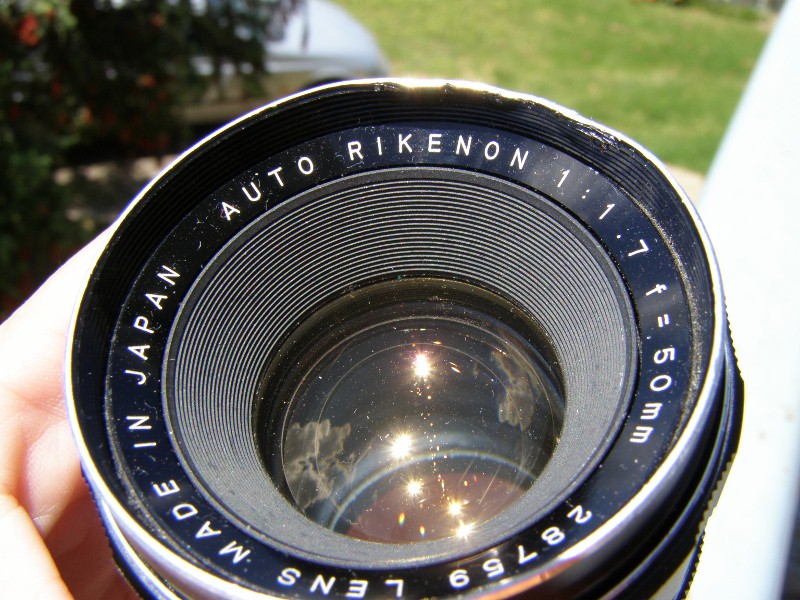
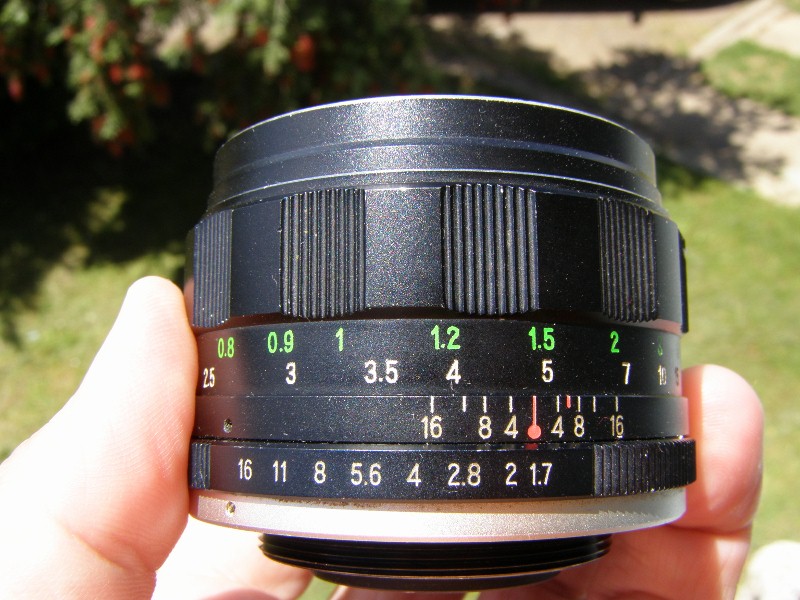
_________________
Moira, Moderator 
Fuji XE-1,Pentax K-01,Panasonic G1,Panasonic G5,Pentax MX
Ricoh Singlex TLS,KR-5,KR-5Super,XR-10
Lenses
Auto Rikenon's 55/1.4, 1.8, 2.8... 50/1.7 Takumar 2/58 Preset Takumar 2.8/105 Auto Takumar 2.2/55, 3.5/35 Super Takumar 1.8/55...Macro Takumar F4/50... CZJ Biotar ALU M42 2/58 CZJ Tessar ALU M42 2.8/50
CZJ DDR Flektogon Zebra M42 2.8/35 CZJ Pancolar M42 2/50 CZJ Pancolar Exakta 2/50
Auto Mamiya/Sekor 1.8/55 ...Auto Mamiya/Sekor 2/50 Auto Mamiya/Sekor 2.8/50 Auto Mamiya/Sekor 200/3.5 Tamron SP500/8 Tamron SP350/5.6 Tamron SP90/2.5
Primoplan 1.9/58 Primagon 4.5/35 Telemegor 5.5/150 Angenieux 3.5/28 Angenieux 3,5/135 Y 2
Canon FL 58/1.2,Canon FL85/1.8,Canon FL 100/3.5,Canon SSC 2.8/100 ,Konica AR 100/2.8, Nikkor P 105/2.5
|
|
| Back to top |
|
 |
|
|
